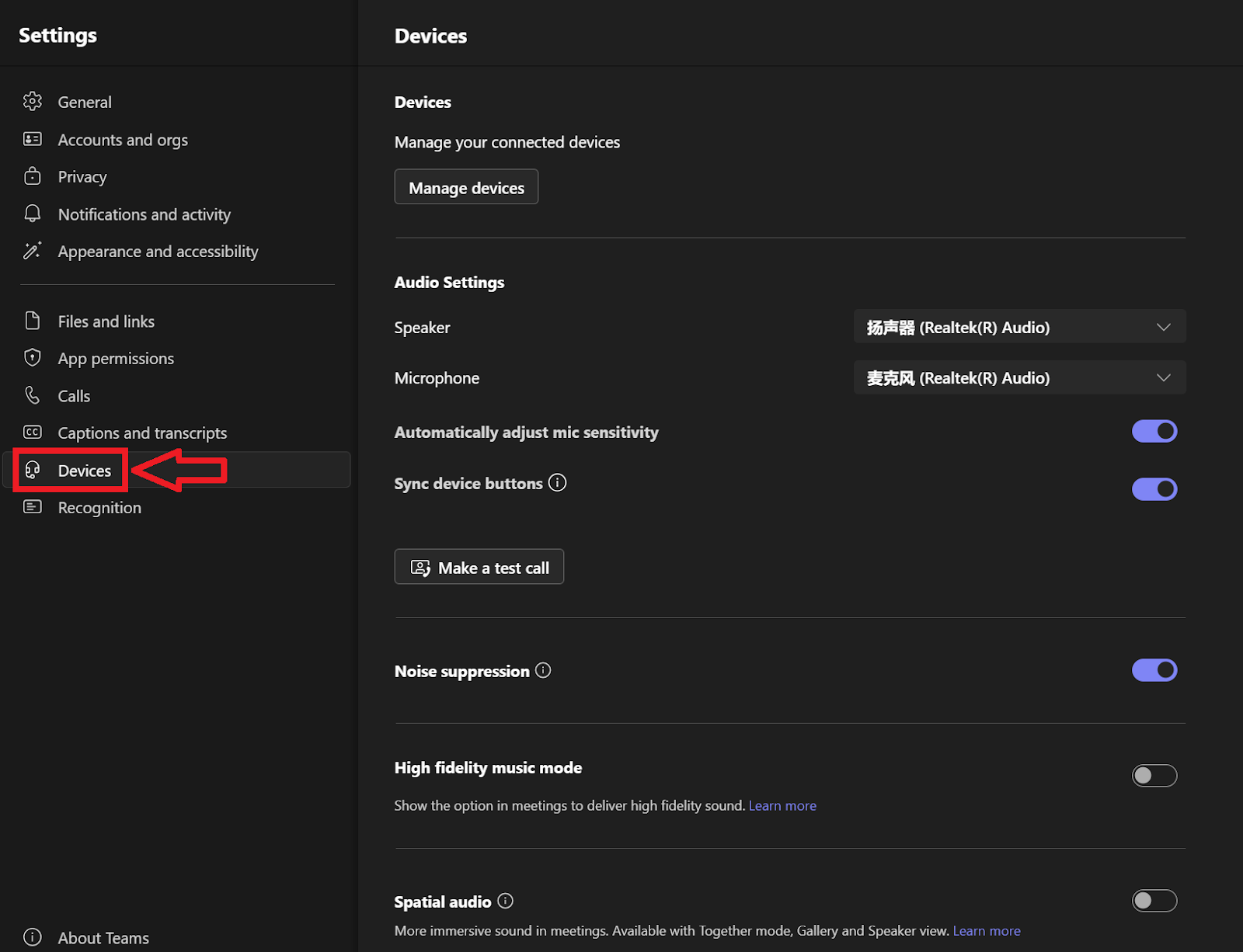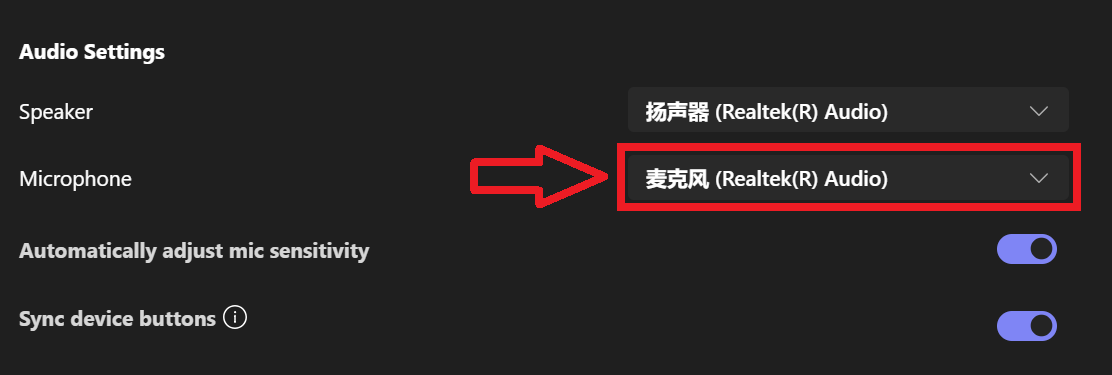Test Audio in Microsoft Teams: Step-by-Step Guide
September 13, 2024
September 13, 2024
June 12, 2025
June 12, 2025
Before jumping into a Microsoft Teams meeting, it's crucial to make sure your audio is working properly. Testing your audio ahead of time helps prevent miscommunication, technical hiccups, and keeps your meeting running smoothly.
In this guide, we'll walk you through the steps to test your audio settings, so you can focus on the conversation instead of troubleshooting. For more insights into Microsoft Teams, check out these related articles: Top Microsoft Teams Alternatives, Microsoft Teams vs Google Meet: A Detailed Comparison, and Zoom vs Microsoft Teams: Pros and Cons for Businesses.
Why Testing Audio in Microsoft Teams is Crucial
Both hosts and participants benefit from testing audio, making meetings more productive and enjoyable.
Ensuring Clear Communication During Meetings
If your audio is not working correctly, important points can be missed.
- Crystal clear sound: You want everyone to hear you without any interruptions.
- No miscommunication: Misheard words can lead to misunderstandings; clear audio helps avoid this.
- Professional impression: Good audio quality reflects well on you and your organization.
Avoiding Technical Issues That Disrupt Meetings
Technical issues can derail the most well-planned meetings. Testing your audio beforehand can help you identify and fix problems before they become disruptive.
- No last-minute fixes: Addressing audio issues before the meeting starts saves time.
- Smooth transitions: Switching between speakers without audio problems keeps the meeting flowing.
- Reduced frustration: Participants are less likely to get annoyed if there are no technical glitches.
Enhancing Overall Meeting Productivity
Productive meetings are the goal for any organization. Good audio ensures that everyone can participate fully.
- Efficient communication: Clear audio helps in quicker and more effective discussions.
- Less repetition: When everyone can hear clearly, there’s no need to repeat points.
- Focused discussions: Participants can focus on the meeting agenda rather than solving audio issues.
Importance for Both Hosts and Participants
Testing audio is not just the host’s responsibility; participants also need to ensure their audio works well, not just the ones leading the meeting.
- Hosts: A host with good audio can manage the meeting more effectively.
- Participants: Clear participant audio ensures their contributions are heard and valued.
- Team effort: Everyone’s responsibility to check their audio makes the meeting more cohesive.
By making sure your audio is in top shape, you contribute to a more efficient and enjoyable meeting experience for everyone involved.
How to Access Audio Settings in Microsoft Teams
To ensure your audio works perfectly, you need to know how to access and adjust the audio settings in Microsoft Teams. Here’s a detailed guide to help you navigate through the process.
Navigating to the Audio Settings Menu
- Open Microsoft Teams: Start by launching the Microsoft Teams app on your device.
- Go to Settings: Click on the three-dotted line in the top right corner. This opens a drop-down menu.
- Select Settings: Choose “Settings.”
- Find Devices: In the Settings menu, click on “Devices.” This is where you can access your audio settings.

Overview of Available Audio Settings
Once you are in the Devices section, you will find several options for configuring your audio setup.
- Audio Devices: Here, you can select the devices you want to use for your microphone, speaker, and camera.
- Noise Suppression: This setting helps reduce background noise during calls. You can choose from these options: “Auto,” “Low,” “Medium,” and “High.”
- Secondary Ringer: If you want an additional sound device to alert you of incoming calls, you can set it up here.
- Camera Settings: While not directly related to audio, ensuring your camera is set up correctly can enhance the overall meeting experience.
Adjusting Microphone and Speaker Settings
Fine-tuning your microphone and speaker settings is crucial for clear communication.
- Microphone: Select your preferred microphone from the drop-down menu. Speak into the microphone and watch the level indicator to ensure it’s picking up your voice. Adjust the volume using the slider.
- Speaker: Choose your speaker from the list. Click “Test” to play a test sound. Adjust the volume slider until the sound is clear and at a comfortable level.
Testing Audio Devices Before Meetings
To avoid any surprises during your meeting, it’s a good idea to test your audio devices beforehand.
- Make a Test Call: In the Devices section, look for the “Make a test call” feature. Click on it to start a test call.
- Test Recording Immediately: If you plan to record the meeting, it's useful to test recording immediately after checking your audio settings to ensure the quality is clear and audible.
- Follow Instructions: Follow the instructions provided during the test call. Speak when prompted to test your microphone. You will hear your own voice played back to you, which helps you gauge the clarity of your microphone.
- Check Playback: Listen to the playback carefully. If the audio quality is poor, you might need to adjust your settings or consider using a different device.
By following these steps, you make sure that your audio settings in Microsoft Teams are optimized for the best meeting experience.
How to Test Your Microphone in Microsoft Teams
Testing your microphone in Microsoft Teams ensures that you can communicate clearly during meetings. Here’s how to test and troubleshoot your microphone.
Steps to Navigate to the Device Settings
- Open Teams: Launch the Microsoft Teams app.
- Access Settings: Click on the three-dots menu icon in the top right corner.
- Select Settings: From the drop-down menu, choose “Settings.”
- Go to Devices: Click on “Devices” to view and configure your audio settings.
Selecting the Appropriate Microphone
- Microphone Selection: In the Devices section, find the “Microphone” drop-down menu.

- Choose Your Microphone: Click the drop-down and select the microphone you wish to use. Ensure it’s the correct device, especially if you have multiple microphones connected.
- Adjust Volume: Use the volume slider to adjust the microphone sensitivity. Speak into the microphone to see the level indicator move, ensuring it’s picking up your voice clearly.
Troubleshooting Common Microphone Issues
If the test call reveals issues, here are some troubleshooting steps:
- Check Connections: Ensure your microphone is properly connected to your computer.
- Update Drivers: Sometimes, updating your microphone’s drivers can resolve issues. Check for updates through your device manager.
- Microphone Permissions: Ensure Microsoft Teams has permission to use your microphone. Go to your device’s settings and check the privacy permissions.
- Background Noise: If there is background noise, enable noise suppression in the Teams audio settings.
- Restart Teams: Close and reopen Microsoft Teams. Sometimes, a simple restart can fix minor issues.
- Test Another App: Use another application to test your microphone. If it works elsewhere, the issue might be specific to Teams settings.
By following these steps, you ensure your microphone is ready and functioning correctly, providing clear communication during your Teams meetings.
How to Test Your Speakers in Microsoft Teams
Ensuring your speakers work correctly in Microsoft Teams is essential for clear audio during meetings. Follow these steps to test and troubleshoot your speakers.
Accessing Speaker Settings for Audio Output
- Open Microsoft Teams: Start by launching the Microsoft Teams application.
- Access Settings: Click on the three-dotted icon in the top right corner.
- Select Devices: From the Settings menu, choose “Devices.” This section allows you to manage all your audio and video devices.
Selecting the Correct Speaker Device
- Locate Speaker Settings: In the Devices tab, find the “Speaker” drop-down menu.
- Choose Your Speaker: Click the drop-down and select the speaker you want to use. If you have multiple speakers connected, ensure you select the correct one.
- Adjust Volume: Use the volume slider to set a comfortable volume level. Make sure the volume isn’t too low or muted.
Playing a Test Sound to Ensure Functionality
- Play Test Sound: In the Devices section, look for the “Test call” button near the speaker settings.
- Listen Carefully: Click the button to play a test sound. Listen to the sound to ensure it’s clear and at an appropriate volume.
- Evaluate Sound Quality: If the sound is distorted or unclear, you might need to adjust the volume or change the speaker.
Troubleshooting Speaker-Related Problems
If you encounter issues with your speakers, try these troubleshooting steps:
- Check Connections: Ensure your speakers are properly connected to your computer. For wired speakers, check the cables and ports. For Bluetooth speakers, ensure they are paired correctly.
- Update Drivers: Verify that your speaker drivers are up to date. You can usually update drivers through your computer’s device manager.
- Speaker Permissions: Ensure Microsoft Teams has permission to use your speakers. Check your device’s privacy settings to confirm permission.
- Restart Teams: Close and reopen Microsoft Teams to refresh the audio settings.
- Test with Another App: Use another application to test your speakers. If they work fine there, the issue may be specific to Teams.
- Check for Muting: Ensure your speakers are not muted either in Teams or on the speaker device itself.
By following these steps, you can ensure that your speakers are set up correctly and ready for your next Microsoft Teams meeting.
Managing Audio During a Microsoft Teams Meeting
To ensure smooth communication during meetings, it's crucial to manage your audio settings effectively. Here’s how you can use in-meeting controls to enhance your audio experience:
In-Meeting Controls
Muting and Unmuting Your Microphone
- Locate the Microphone Icon: During a meeting, find the microphone icon on the meeting toolbar at the bottom of the screen.
- Mute/Unmute: Click the mic icon to mute or unmute yourself. When muted, others can't hear you, which is useful to minimize background noise.
- Shortcut: Use the keyboard shortcut Ctrl+Shift+M (Windows) or Command+Shift+M (Mac) to quickly toggle muting.
Adjusting Volume Settings During a Call
- Access Volume Controls: Click the three dots (more options) on the meeting toolbar and select “Device settings.”
- Adjust Volume: In the device settings menu, use the volume slider for both microphone and speakers to adjust the levels to your preference.
- Check Your Environment: Ensure your environment is quiet to prevent needing excessively high volumes.
Switching Between Audio Devices Mid-Meeting
- Open Device Settings: Click on the three dots on the meeting toolbar, then select “Show device settings.”
- Select a New Device: In the device settings menu, choose a different microphone or speaker from the drop-down menus.
- Apply Changes: Once you select a new device, the changes apply immediately, allowing you to switch seamlessly without leaving the meeting, ensuring you're ready to answer incoming calls without disruptions.
Using Live Captions and Transcription for Clarity
- Activate Live Captions: Click on the three dots on the meeting toolbar and select “Turn on live captions.” This feature displays spoken words as text on the screen, helping those who might have difficulty hearing.
- View Transcription: If enabled by your organization, you can also access a live transcription of the meeting. Click on “More actions” and select “Start transcription.” This feature provides a written record of the conversation.
- Review Post-Meeting: After the meeting, access the transcript in the meeting chat or files tab to review what was discussed and ensure you didn’t miss any important points.
By mastering these in-meeting controls, you can effectively manage your audio settings and ensure clear communication during your Microsoft Teams meetings.
How Tactiq Enhances Microsoft Teams Experience
Tactiq is an AI-powered tool designed to improve your Microsoft Teams meetings with features like live transcription, AI-generated summaries, and customizable prompts. Here's how it helps:
- Real-Time Transcription: Tactiq captures everything said during meetings, instantly converting it into text so you can follow along without missing important points.
- AI Meeting Kits & Prompts: Streamline follow-up tasks with Tactiq’s customizable AI prompts and meeting kits, perfect for creating action items, summaries, or even emails.
- Post-Meeting Summaries: After each meeting, Tactiq’s AI generates concise summaries and action steps, saving time on post-meeting documentation.
- Smart Search: Easily search and retrieve specific information from transcripts, ensuring you can quickly access the details you need.
By integrating with Microsoft Teams, Tactiq ensures a seamless workflow, automating tasks and enhancing meeting productivity with its AI-powered features. Download the free Tactiq Chrome Extension today!
Troubleshooting Common Audio Issues in Microsoft Teams
Audio problems during Microsoft Teams meetings can disrupt communication. Here’s how to tackle common audio issues effectively:
Managing Background Noise for Clearer Audio
Background noise can be distracting during meetings. Here’s how to minimize it:
- Use Noise-Canceling Devices: Invest in noise-canceling headphones or microphones to reduce ambient sounds.
- Enable Noise Suppression: Microsoft Teams offers a noise suppression feature. Enable it in the audio settings to filter out background noise.
- Find a Quiet Location: Whenever possible, join meetings from a quiet place. This reduces the likelihood of background noise interfering with your audio.
Using Diagnostic Tools to Pinpoint Issues
Microsoft Teams provides several tools to help diagnose and fix audio problems:
- Teams Health Dashboard: Access the health dashboard within Teams to check for any ongoing issues or outages that might affect audio.
- Call Quality Dashboard: Use this tool to monitor the quality of calls. It provides insights into what might be causing audio issues.
- Run a Test Call: The test call bot lets you check your microphone, speaker, and camera setup. It provides feedback on how well your device is performing.
- Check Network Connectivity: Poor network connection can lead to audio problems. Ensure internet connection is stable and fast enough for video calls.
By following these steps, you can troubleshoot and resolve common audio issues in Microsoft Teams, ensuring a smoother communication experience.
Testing your audio before a meeting ensures clear communication, prevents miscommunication, and helps you avoid technical issues that could disrupt the meeting. You save time and make a professional impression by addressing audio problems in advance, so you can focus on the conversation instead of troubleshooting.
To access audio settings, open Microsoft Teams, click the three-dotted menu in the top right, select 'Settings,' then go to 'Devices.' Here, you can choose your microphone and speaker, adjust their volumes, and enable features like noise suppression to optimize your meeting experience.
Select your preferred microphone and speaker in the Devices section, then use the 'Make a test call' feature to check both. Speak when prompted and listen to the playback to ensure your voice and audio output are clear, making adjustments as needed for the best quality.
During a meeting, use the toolbar to mute or unmute your microphone, adjust volume settings, and switch between audio devices as needed. You can also turn on live captions or transcription for added clarity, helping everyone stay engaged and informed throughout the meeting.
Tactiq provides real-time transcription, AI-generated summaries, and smart search, so you never miss important details and can easily review or share meeting insights. By automating note-taking and follow-up tasks, Tactiq lets you focus on the discussion and boosts your productivity in every Teams meeting.
Want the convenience of AI summaries?
Try Tactiq for your upcoming meeting.
Want the convenience of AI summaries?
Try Tactiq for your upcoming meeting.
Want the convenience of AI summaries?
Try Tactiq for your upcoming meeting.









